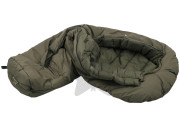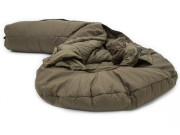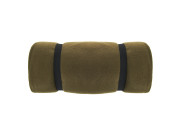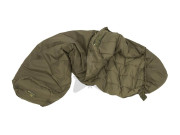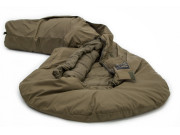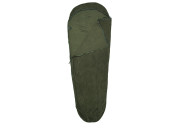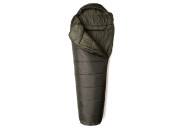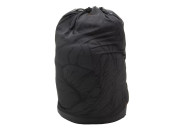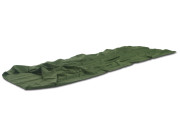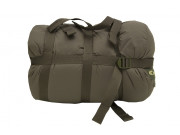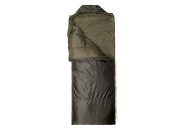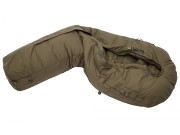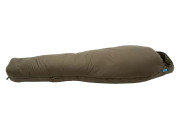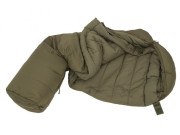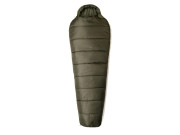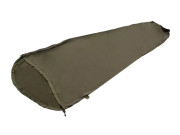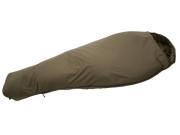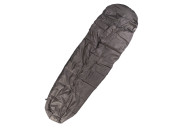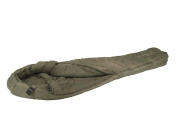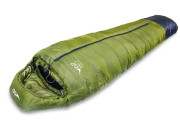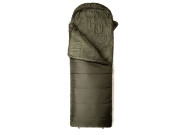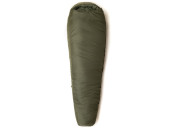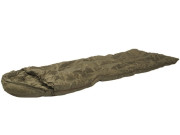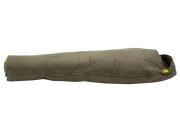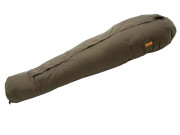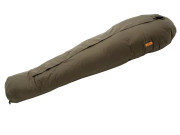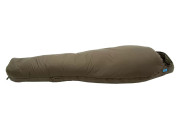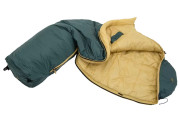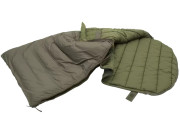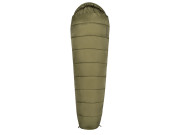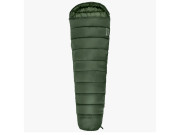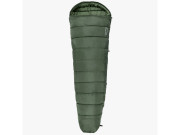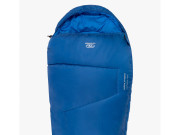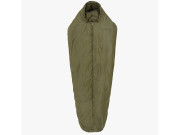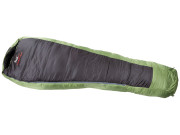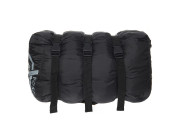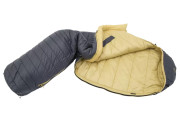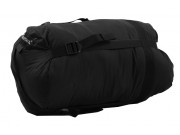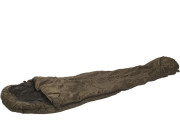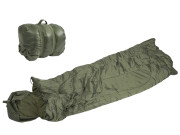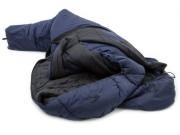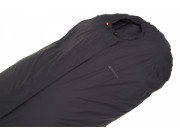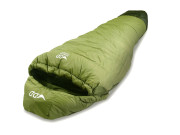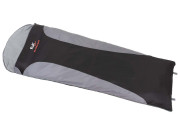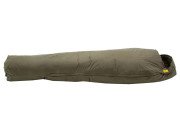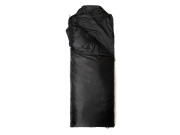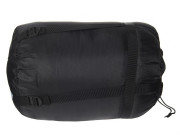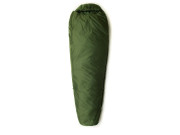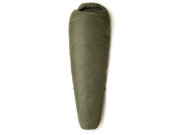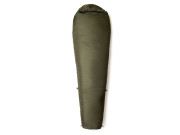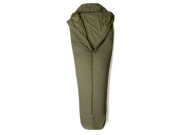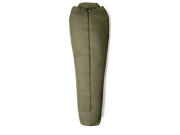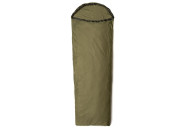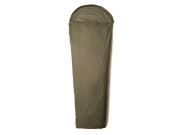Choosing a Sleeping Bag and Accessories
Not being able to sleep well while on an adventure can be exhausting—rest is essential for an enjoyable experience. There are many different types of sleeping bags, and people often make mistakes when choosing one. Additionally, a sleeping bag is part of a system that includes your sleeping clothes, sleeping pad, and possibly a tent or bivy bag that all work together.
I, Henrik at Röda Stjärnan, hope this guide will help you get better sleep on your adventure! At the bottom, I’ll also share my own choices and experiences.
The Sleeping Bag
The first thing to determine is when and how you’ll be using your sleeping bag. Sleeping in a snow cave at -30°C is vastly different from sleeping in a proper tent in the middle of summer. Be realistic—do you actually camp in sub-zero temperatures? A sleeping bag rated for extreme cold will be heavier and can also be too warm on a summer night.
Consider if you are larger than average (some bags come in multiple sizes) and think about your budget. All our sleeping bags are offered at great value, but you get what you pay for. If you’re planning to use your sleeping bag often, invest in quality from Carinthia.
At Röda Stjärnan, we primarily focus on synthetic sleeping bags. Down sleeping bags are extra sensitive to moisture, which is why we have opted against them.
-A Sleeping Bag for Swedish Summer
Swedish summers can be scorching hot but also quite chilly. A common mistake is buying an extremely thin, cheap sleeping bag and then experiencing a cold night. Expect evening temperatures around 10°C, even in the middle of summer. With a bag suited for this temperature, you’ll also be fine during mild spring and autumn nights. You can reinforce warmth with a liner or extra clothing if needed. On extremely warm nights, you can unzip the bag and use it as a blanket. Some summer sleeping bags are unsuitable for overnight stays in open shelters, even in summer. They require an additional bivy bag or warmer sleeping clothes. Carefully consider how your summer camping conditions will be.
-A Three-Season Sleeping Bag
A sleeping bag rated down to around 0°C or slightly below is usually called a three-season bag. It works for spring, summer, and autumn, even in the mountains. These sleeping bags are often heavier and bulkier, and they can be quite warm on hot summer days. However, for many, a three-season sleeping bag is a good choice since it extends the camping season without excessive weight. One of our most popular models is the Carinthia Defence 4, a tried-and-true bag that will last a lifetime.
-A Winter Sleeping Bag
A winter sleeping bag is designed for extremely low temperatures, often intended for Arctic conditions, mountain terrain, or other extreme environments. These winter sleeping bags are typically large, heavy, and expensive. Often, a better option is to buy a high-quality three-season bag and reinforce it with a liner or an additional thinner sleeping bag. However, if you frequently camp in winter, a single robust solution is preferable—look for a comfort rating of -20°C or even colder.
One specific setup involves a modular sleeping system, where you have a thin summer sleeping bag and a three-season sleeping bag. In winter, both are used together. This way, the thin summer bag can also be used separately in warm conditions. A popular choice is the Carinthia Tropen, which works as a reinforcement layer for a three-season bag in winter.
Whether modular systems are a genius solution or a compromise is debated, but they might not be the first choice for beginners.
The Sleeping Pad
Sleeping outdoors means you have air surrounding you, which doesn’t conduct heat well—except for the ground beneath you, which can sap your warmth if not properly insulated. The ground is also uneven, with roots and rocks that can disrupt sleep. A
sleeping pad insulates against the cold ground and smooths out rough terrain. However, pads can be bulky, and inflatable models can puncture. Below, we go through different types and considerations.
There are several types of sleeping pads. Traditional foam pads come in various thicknesses, with some featuring a waffle design that improves insulation while reducing weight. Inflatable pads consist of air and a foam structure, offering great comfort and insulation at a lower weight—but if punctured, they become useless.
For ultimate comfort,
camp beds are an option. They elevate you off the ground, providing better sleep quality, though they are heavier and less suitable for hiking.
Alternatively, you can use thin sleeping pads and insulate with natural materials like spruce branches, a classic technique that creates a soft and insulating bed.
Hammocks and Hanging Beds
Some people prefer replacing their sleeping pad with a
hammock, a lightweight hanging bed that lifts you off the ground. While traditionally used in the tropics, hammocks have become increasingly popular in northern climates. They can also be used in winter when combined with underquilts or insulated pads.
Hammocks are incredibly lightweight, packing down to the size of a grapefruit. They are often used with a tarp for added weather protection.
However, sleeping in a hammock is a personal preference—some love it, while others find it awkward to get in and out of and restrictive while sleeping.
Bivy Bags, Tarps, and Additional Protection
This guide does not cover
tents, but sometimes, you’ll want your sleeping bag to function without one. To protect your bag from dirt and rain, a bivy bag (or "bivvy bag") is an option. Made of Gore-Tex or similar waterproof yet breathable materials, they protect against rain but can trap moisture inside, particularly around the feet. While they add warmth and wind protection, fully relying on a bivy bag in heavy rain is challenging—positioning yourself under a tree helps.
Another option is a
tarp, a lightweight rain and wind shield. A sufficiently large tarp can be folded under and over your sleeping area, protecting against ground moisture and rain from above. A tarp is versatile and easy to pack, making it a great addition to a bivy setup.
My Own Experiences and Choices
I remember one of my first nights outdoors—Lucia camp with the scouts. I was young, and it was cold, but I still have no memory of freezing, for some reason.
However, during a survival course for youth in the military, I was miserable. It was pouring rain, the shelter was leaking badly, and I was sleeping on the edge without a sleeping bag. Pure misery.
Through many uncomfortable nights, I learned valuable lessons. But during military service, we used the Carinthia sleeping system. It consists of a three-season sleeping bag and a thinner reinforcing bag, used with a bivy bag and standard sleeping pad. Over 100 field nights in temperatures as low as -35°C taught me the importance of knowing my gear.
Now, 14 years later, I still use that same sleeping bag. While heavy, it’s durable and dries quickly.
In general, I am very satisfied with my sleeping bag, but since it is military-grade, it is somewhat unnecessarily heavy and rugged. Having a sleeping bag system means the bag is heavier than one designed for a specific temperature range. However, the advantage is that it dries quickly, as you can separate the layers and air them out. Even when I have ended up with a completely soaked bag, I have been able to dry it in field conditions. If I were to buy a new one, I would probably go for the
Carinthia Defence 4.
I have increasingly started sleeping in a bivy bag, preferably with a tarp overhead after waking up in heavy rain one too many times—not fun when you have to change clothes and make breakfast in wet conditions. I even used a bivy bag on a trip in the mountains, and it worked well until it started pouring rain. For a sleeping pad, I use a thin German military pad, which I reinforce with spruce branches underneath or place on soft moss. Inflatable pads are comfortable, but one night I woke up in the middle of the night to find mine had punctured...
Personally, I haven’t embraced hammocks—I move around too much in my sleep.
Tips & Tricks
- Don’t wear too many clothes in your sleeping bag. A base layer, a
balaclava, and a pair of very loose
socks work best.
- Take time to prepare your sleeping surface. Remove twigs and stones, and find a soft spot. Properly insulate against ground cold.
- Fill a Nalgene bottle with hot water, cover it with a sock, and you’ll have a small heater inside your sleeping bag to warm you up and drive out moisture.
- Don’t try to dry too many clothes inside your sleeping bag. A pair of socks and a thin sweater is usually the max.
- If it's cold, tighten the thermal collar and draw the sleeping bag snugly around your face.
- Never breathe inside the sleeping bag. Your exhaled air is moist and will quickly make the bag damp.
- If two mice wake you up in the middle of the night by racing around inside your sleeping bag, don’t panic.


